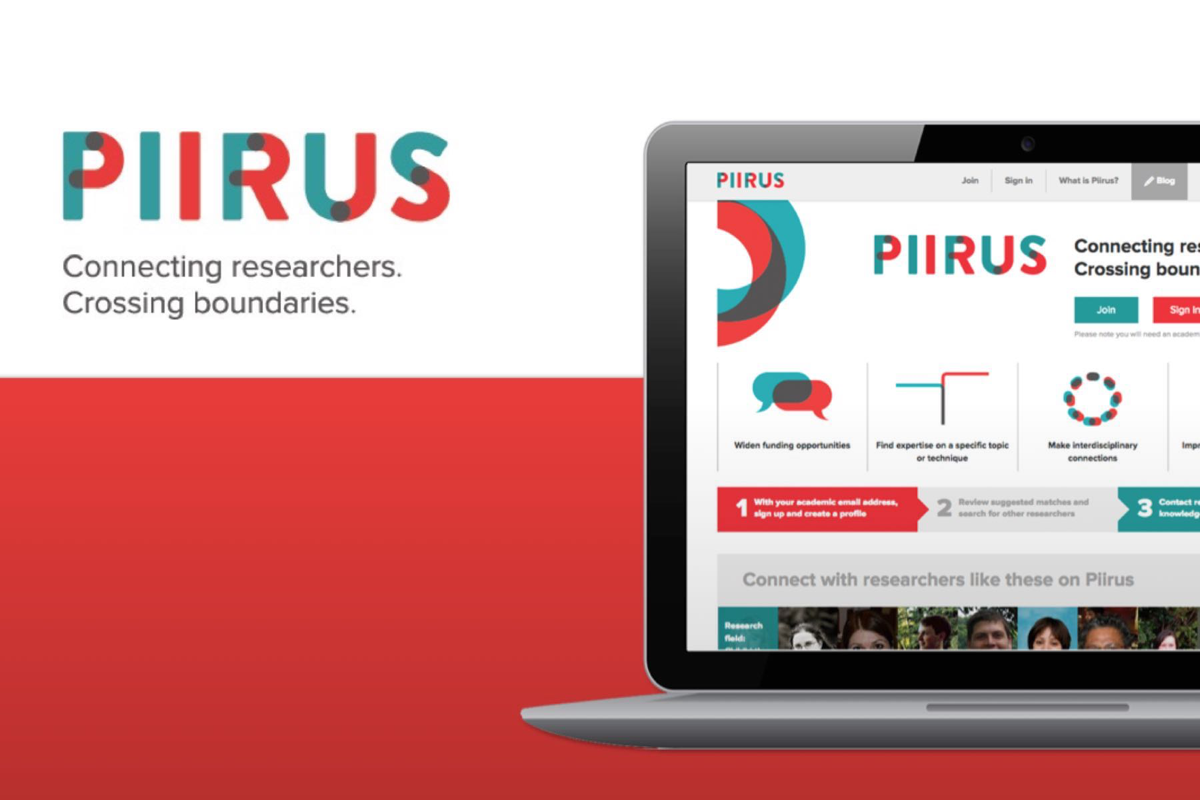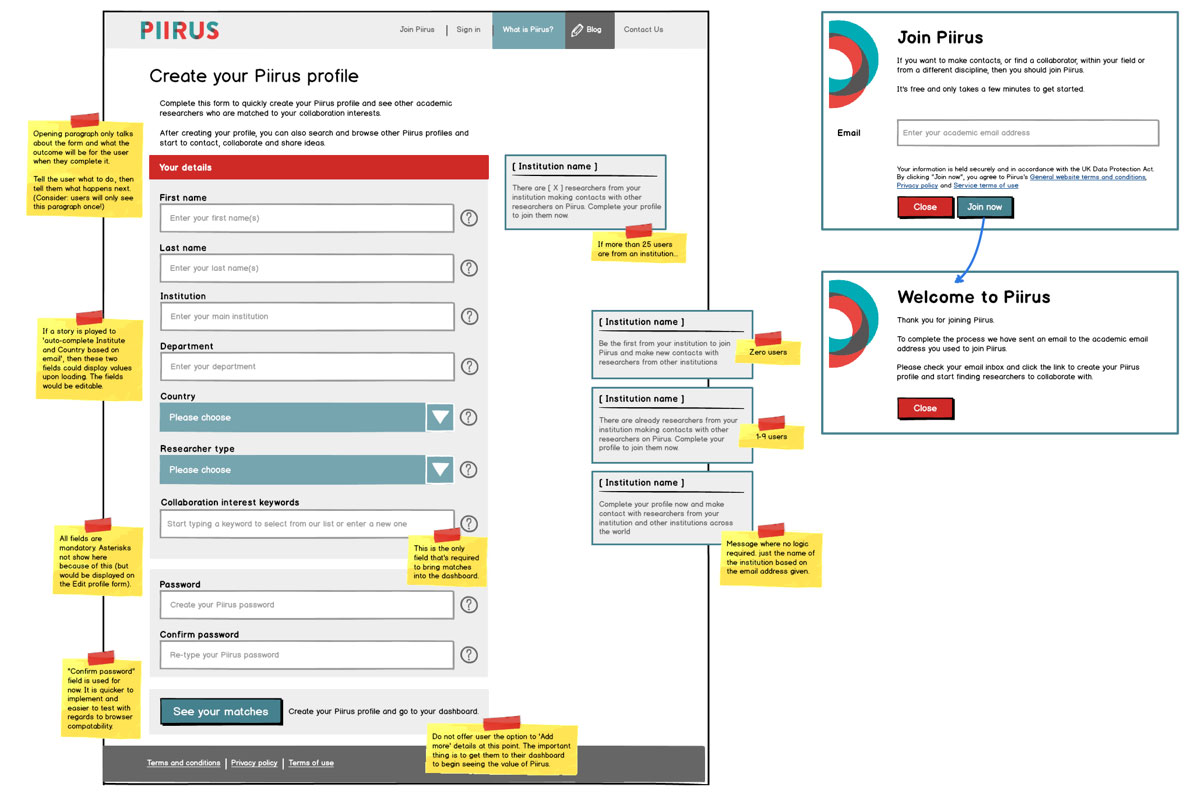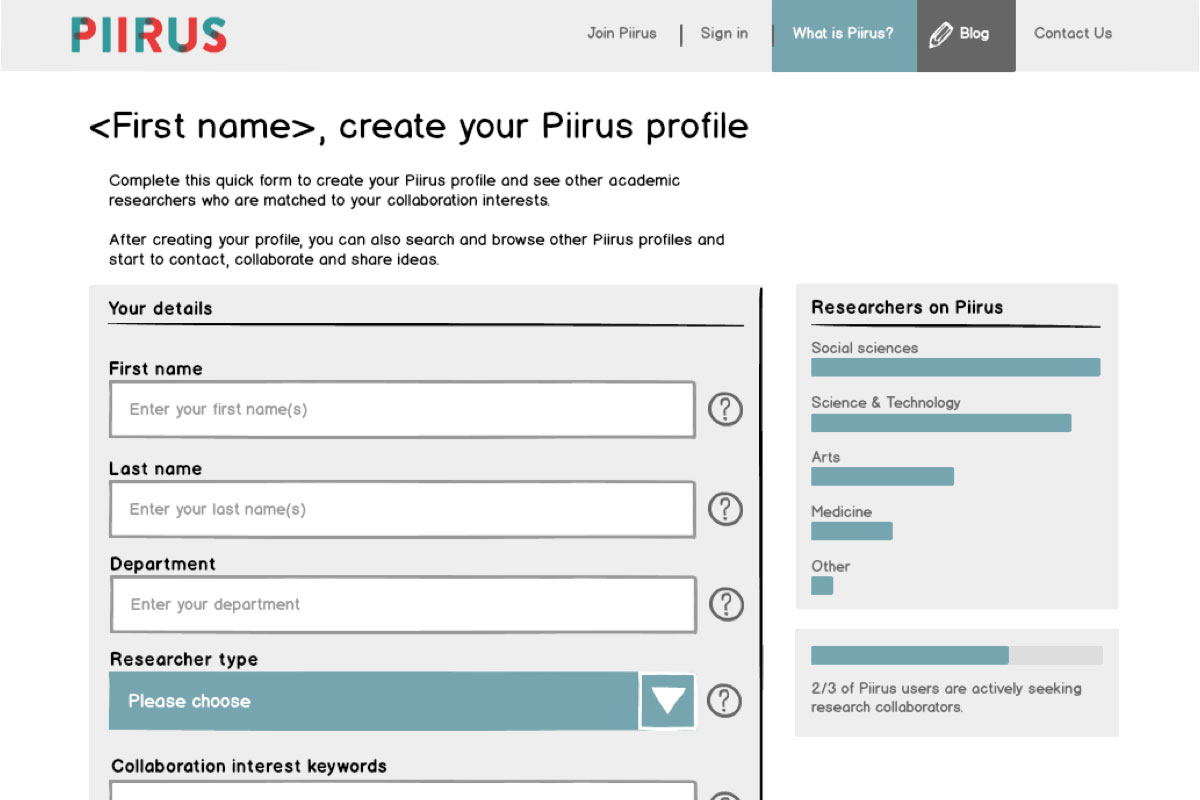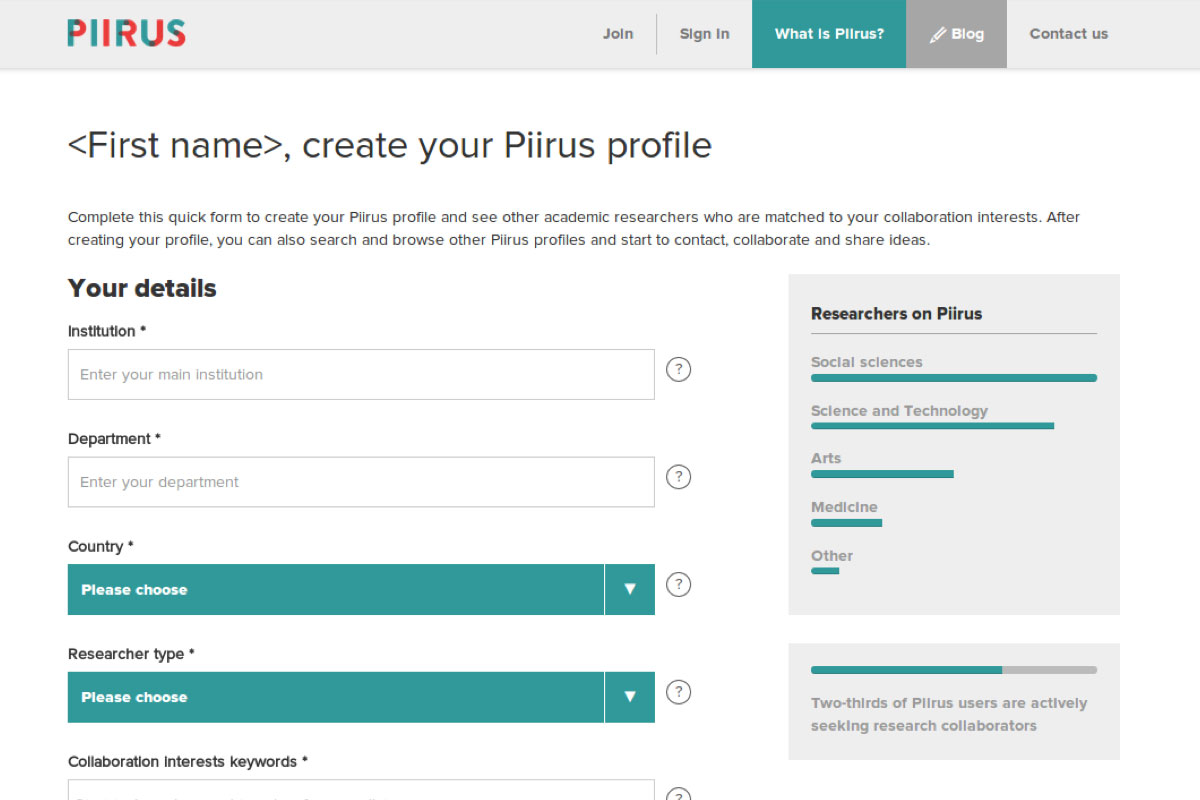Piirus
Developing a global network of researchers
- Systems thinking
- UI design
- Concept development
Date
October 2014 – March 2015
Working with
- Piirus
- University of Warwick
- Brilliant Noise
Tools and methods
- Usability review
- Balsamiq Mockups
- HTML/CSS

Piirus is a service that enables researchers to connect with collaborators from multiple disciplines, countries and sectors.
To increase the number of people signing-up to the service, I identified essential data fields in order to redesign the user interface and workflow process.
The client for this project had come to realise that too many people were not completing the sign-up form to access the service. I identified several problems with the design and workflow of the existing registration process and developed a solution for restructuring both the front and back-end of the service. I used analytics to measure the 'drop-out' rate of users signing up for the service, and was able to reduce this number by 75%, adding hundreds of new users.

Redesigned user interface that only requests the essential information needed to provide new users access to the service.
For this project I took on the roles of business analyst and UX designer, defining user cases and requirements. I also acted as the mediator between the client, development team, and external design agencies, keeping the focus on the end-user throughout the development of the product.

Low-fidelity wireframe.

High-fidelity (HTML) wireframe.
Throughout the project, the client had to decide on which features were most crucial in the development of the product. Due to a lack of UX understanding, these decisions often resulted in problems later in development. I took a pragmatic approach to addressing this by engaging with the client at an earlier stage, and by producing several design solutions for each new feature. This enabled the client to make better-informed decisions and gave them a better understanding of the impact of their design decisions.

Join workflow before with issues highlighted in red/

Join workflow redesigned with solutions highlighted in purple.